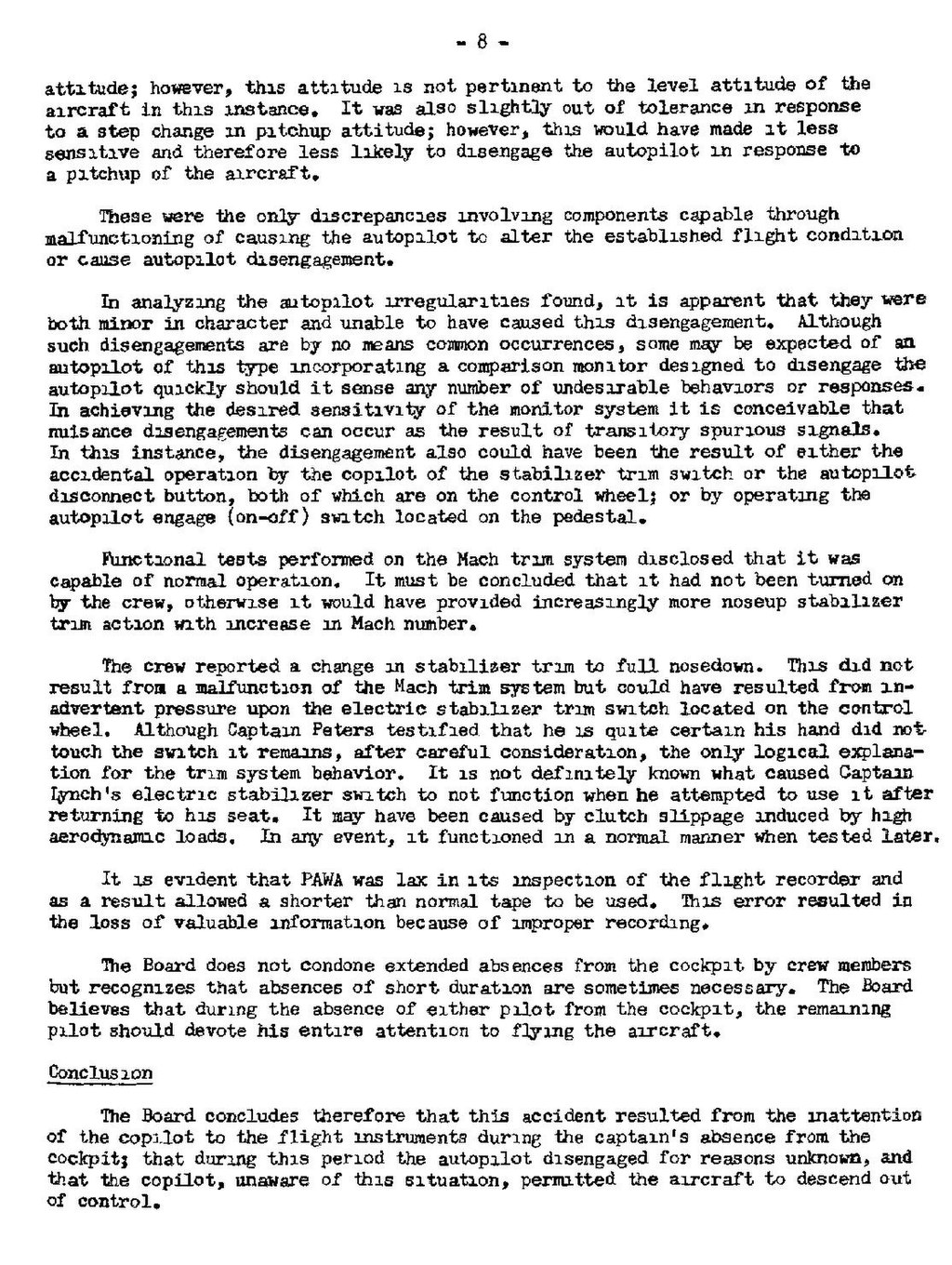- 8 -
attitude; however, this attitude is not pertinent to the level attitude of the aircraft in this instance. It was also slightly out of tolerance in response to a step change in pitchup attitude; however, this would have made it less sensitive and therefore less likely to disengage the autopilot in response to a pitchup of the aircraft.
These were the only discrepancies involving components capable through malfunctioning of causing the autopilot to alter the established flight condition or cause autopilot disengagement.
In analysing the autopilot irregularities found, it is apparent that they were both minor in character and unable to have caused this disengagement. Although such disengagements are by no mans common occurrences, some may be expected of an autopilot of this type incorporating a comparison monitor des1gned to disengage the autopilot quickly should it sense any number of undesirable behaviors or responses. In achieving the desired sensitivity of the monitor system it is conceivable that nuisance disengagements can occur as the result of transitory spurious signals. In this instance, the disengagement also could have been the result of either the accidental operation by the copilot of the stabilizer trim switch or the autopilot disconnect button, both of which are on the control wheel; or by operating the autopilot engage (on-off) switch located on the pedestal.
Functional tests performed on the Mach trim system disclosed that it was capable of normal operation. It must be concluded that it had not been turned on by the crew, otherwise it would have provided increasingly more noseup stabilizer trim action with increase in Mach number.
The crew reported a change in stabilizer trim to full nosedown. This did not result from a malfunction of the Mach trim system but could have resulted from inadvertent pressure upon the electric stabilizer trim switch located on the control wheel. Although Captain Peters testified that he 15 outs certain his hand did not touch the match it remains, after careful consideration, the only logical explanation for the trim system behavior. It is not definitely known what caused Captain Lynch's electric stabilizer switch to not function when he attempted to use it after returning to his seat. It may have been caused by clutch slippage induced by high aerodynamic loads. In any event, it functioned in a normal manner when tested later.
It is evident that PAWA was lax in its inspection of the flight recorder and as a result allowed a shorter than normal tape to be used. This error resulted in the loss of valuable information because of improper recording.
The Board does not condone extended absences from the cockpit by crew members but recognizes that absences of short duration are sometimes necessary. The Board believes that during the absence of either pilot from the cockpit, the remaining pilot should devote his entire attention to flying the aircraft.
Conclusion
The Board concludes therefore that this accident resulted from the inattention of the copilot to the flight instruments during the captain's absence from the cockpit; that during this period the autopilot disengaged for reasons unknown, and that the copilot, unaware of this situation, permitted the aircraft to descend out of control.
